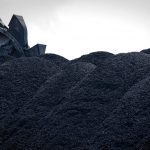The first VLGC powered by liquefied petroleum gas was headed toward the Panama Canal Dec. 17 after loading at Enterprise Products Partners’ hydrocarbon terminal on the Houston Ship Channel, Platts trade flow software cFlow showed.
Already the world’s largest propane exporter, Enterprise’s achievement provides another demand source for US shale supplies by allowing large vessels to refuel with LPG at the loading dock instead of making an additional stop at a bunkering facility.
Amid the global energy transition to cleaner-burning renewable energy, Enterprise also sees increased exports of LPG and use of LPG in fueling vessels as a way to cut carbon emissions when compared with using carbon-intensive sources such as coal and wood. It said in October that LPG export demand, particularly to Asia, has remained resilient despite the market shocks from the coronavirus pandemic.
The Very Large Gas Carrier BW Gemini departed Dec. 13 from Enterprise’s terminal, according to cFlow. It was loaded with 590,000 barrels of LPG, including cargo and fuel, Enterprise said in a statement Dec. 17.
A company spokesman, Rick Rainey, declined to say where it would unload, though cFlow showed its captain’s destination as Panama’s Port of Cristobal, a waypoint for vessels passing through the Panama Canal. The Canal is the shortest route to Asia — a major destination for natural gas liquids — from the US Gulf Coast. A spokesperson for BW Group did not immediately respond to a message seeking comment.
Stripping ethane and propane from the natural gas produced at the wellhead creates two more revenue streams in addition to the dry gas that remains. Flourishing US exports in recent years have opened up new markets for NGLs and their byproducts. Producers in key US shale basins where increasing amounts of associated gas are being lifted with oil rely on those outlets for their supplies.
LPG prices and freight rates rose in November as the Northern hemisphere prepared for residential and commercial demand this winter and demand was boosted by patio heaters for outdoors social distancing employed due to the pandemic.
The US exported over 1.8 million b/d of LPG for a week at the end of November, exceeding the all-time record of 1.75 million b/d set earlier in the summer, according to Platts Analytics. US Energy Information Administration data showed propane exports climbed 9,000 b/d to 1.36 million b/d for the week ended Dec. 11, remaining above 1 million b/d for a 13th consecutive week and averaging 1.27 million b/d during that period. This high volume likely represents strong demand for propane for on-purpose production of propylene and butane demand for winter gasoline blending.
Overall global NGL supply for 2020 is expected to come in just 2% lower than 2019 as production curtailments in the US and OPEC+ cuts ease. However, global supply will not return to 2019 levels until 2023, primarily due to the decline in US shale production expected in 2021, according to Platts Analytics.
Price signals
Platts assessed December non-LST propane, reflecting barrels at the Enterprise NGL storage and fractionation facility in Mont Belvieu, Texas, at 63.25 cents/gal Dec. 16, a year-to-date high and up 1.75 cents day on day. Platts last assessed propane higher at 63.625 cents/gal on April 29, 2019.
Platts assessed Very Large Gas Carrier freight rates out of the US Gulf Coast to Japan up $5/mt to $165/mt Dec. 16, with the Houston-Japan freight last assessed higher at $170/mt on Nov. 6, 2015. Freight from Houston to Europe climbed $2/mt to $92/mt day on day, the highest since Platts assessed Houston-Europe freight at $95/mt on July 24, 2015.
Demand in Asia was described as robust for H2 January propane, with sources identifying the seasonal winter peak as the support for pricing increases.
Source: Hellenic Shipping






